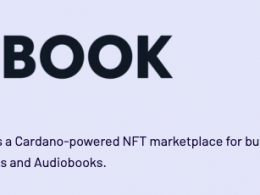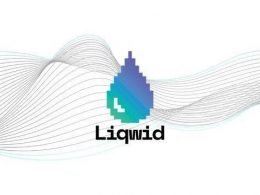The reason why Mal looks like a daemon is due to the programmable swaps. A Daemon, in computing, is a background process that performs tasks for the user, much like Maladex’s programmable swaps.
You could even say that every programmable swaps a demon (or Mal).
As programmable swaps are the underlying building blocks of everything on the Maladex platform, from swaps to DCAs, indices, synthetics, strategy development and active investing, the name “Mal” is fair.
Maladex is a project that, not only aims to build a simple decentralized exchange of assets in real time, but also aims to introduce a series of novel concepts such as writing and executing trading strategies, indices, derivatives, synthetics, structures options and active investing, similar to the way hedge funds generate returns.
Maladex will be a sound platform for developing investments with high capital efficiency and without impermanent loss. Additionally, decisions and observations will be supported by data, market indicators and by providing a DeFi education platform.
They aim to develop a pathway for people to improve their investing skills, as well as providing tools and infrastructure for the creation of revenue such as market making, crypto indexes, synthetics, automated portfolio management strategies, and more.
Do we need an Account Based Model for DEX?
Cardano uses a new extended unspent transaction output (eUTxO) model to represent the state of the ledger. The consequences of this modeling choice are:
- context locality, that is, each transaction consumes the minimum amount of information required leading to predictable execution and much lower (and accurate) fees than blockchains with a global memory.
- concurrency, since there is no global state, we can think of all transactions that occur in parallel, where they interact with each other at the same time.
- congestion, where each eUTxO can be spent once per block
Unlike account-based models like Ethereum, which acts as a single-threaded application with global memory, Cardano is a highly concurrent system. In any concurrent system, you need to manage access to shared parts to ensure correct exit occurs. Cardano achieves this correction property by requiring that each eUTxO must be spent to modify its state and that it can only be spent once per block (currently 20 seconds).
In classical markets, liquidity is provided through limit orders in the order book, in typical decentralized markets it is provided through AMM (Automated Market Maker) formulas, which can be fully centralized as in the case of UniSwap v1 / v2, or very fragmented as in the case of UniSwap v3.
For orders to be executed, only local information is needed, for example, to match a limit sell order with a corresponding limit buy order and whose prices cross. Similarly, for the market order to be executed, we only need to find the lowest price limit order or the AMM fragment that matches (in the case of Maladex AMM that results in the best execution price).
Therefore, the global liquidity status as in UniSwap v1 / v2 is completely unnecessary. Furthermore, it is highly undesirable as it leads to extremely inefficient liquidity supply.
CFMMs (Constant Formula Market Makers) with global liquidity believe that you are as likely to buy a pizza today for $ 20 as it is for $ 1B. This leads to extreme liquidity inefficiency and unrealistic market models.
Liquidity fragmentation alone, as is the case with UniSwap v3, leads to the emergence of a geometric pricing model and, as a result, a significant reduction in impermanent loss and an increase in capital efficiency.
The high capital efficiency means that market prices can be represented effectively using even small capital in AMM models and the low impermanent loss means that investors do not lose funds simply by using DEX.
Thus, Maladex is not just Cardano’s first DEX to propose a model that inherently eliminates impermanent loss and significantly increases capital efficiency, but the first DEX to propose both. This paradigm shift will make it possible for traders and investors to transition from centralized exchanges to decentralized exchanges.
This has 2 major consequences:
- transactions are much cheaper and fees can be calculated exactly, leading to a much better user experience
- Plutus developers should consider concurrency as part of their DApp design and implement it in such a way that the highest possible performance can be achieved while maintaining fairness and trust.
Maladex aims to revolutionize the world of finance by:
- providing the tools that allow everyone to create sound and efficient ways of investing;
- increasing the efficiency of the cryptocurrency market and accelerating the transition from TradFi to DeFi;
- building the foundations of the financial markets of the future.
For the first time, anyone can design a solution that will execute complex orders without the user having to monitor the exchange at all times, or develop their own solutions that interact with blockchain protocols.
Tokenomics
Maladex platform has a Cardano-native utility token called MAL. MAL token is shared across all Maladex products and is the platform native unit of account which enables access to platform functionality. MAL has a fully diluted supply of 42,000,000 and approximately a 5 year gradual vesting period.
MAL token is allocated in the below percentages:
• 20% allocated to the team; with 4% vested every year, over a total period of 5 years, reserved for yearly team performance bonus;
• 10% reserved for the allocation before platform launch;
• 25% reserved for treasury liquidity bonding over the span approximately 5 years (minimal amount of tokens will be bounded at launch only to guarantee the liquidity of MAL tokens and the rest is going to be released over years);
• 45% incentivization rewards, 40% reserved for rewards for using the platform, such as yield farming, DeFi educational content creation, etc., and 5% reserved directly for the airdrops to incentivize and reward actions outside of the mentioned ones (eg, reward for moving liquidity from different exchanges, reward for having used the platform before date X, etc.).
MAL Token Utility
MAL is a Cardano-native fixed-supply utility token. MAL token derives its value in the market from the perceived functionality by the users. This is a model with strong fundamentals as the utility guarantees healthy price dynamics as opposed to purely governance-based tokens.
MAL token is currently designed to provide the below utility (but in the future might include additional utility):
- native settlement unit of account for hydra head (layer 2) execution and programmable swap resources;
- computational credits for back-testing and access to high volumes of historical data;
- consumption of on-chain oracles;
- tips to DeFi educational content creators;
- locking a specific amount of tokens (without spending them) will give access to a series of professional data;
Maladex Treasury
MAL collected from protocol utilization will go into Maladex treasury, where they will be used to:
- fund protocol development and DeFi research;
- fund the platform infrastructure
- be distributed to the platform users in the form of incentives (once the initial 5 year supply of reward allocation is exhausted the incentives will be funded from the treasury);
- provide MAL incentives for creation of mathematically sound liquidity pools and instruments;
- be used to fund the rewards distribution for DeFi educational content writers,
Why Audits Matter
An audit is the thorough analysis of source code to discover any bugs, security breaches, and violations of good design standards.
In the case of DEX (and any DApp) it is an audit of the code of smart contracts focused on known vulnerabilities, a specific programming language and financial operations.
A comprehensive audit involves automated code scanning for known vulnerability patterns and scanning for invalid states.
The audit should end with a certificate in which each vulnerability found is rated on the severity scale, and recommendations are made to the project.
After the first round, the project will work to resolve the main vulnerabilities and will be audited again. Any change in the code (of the smart contract) can lead to the introduction of new vulnerabilities throughout the system.
Funding
Maladex uses an ISPO model (Initial Stake Pool Offering) to distribute the tokens, which means that when you delegate your ADAs to any of the Maladex pools, MAL or MAL 2, you will receive both the expected ADA rewards and the tokens of MAL, and if you delegate to XMAL, only MAL tokens, but in a higher proportion than the previous two.
More information: The Maladex ISPO, precisely how we calculate your rewards and how to get involved and in Maximize your MAL tokens with the XMAL pool.
Maladex presented to Catalyst one proposal in FUND5, DEX, Cardano Decentralized, which was not funded, and later, two proposals that won funding in FUND6, Maladex’s Algorithmic Swap Protocol and Maladex: Cardano Index Funds.
Roadmap
2021-Q4
- Implementation of novel swap protocols with risk management and superior yields
- Swap research paper publication
- Performance testing an optimization
- Maladex launch
- Yield farming research
- Algorithmic trading protocol draft white paper
- Multiple protocol security audits, bug bounty programs
- On-chain quantitative market indicators
- Paper trading platform
- VC seed round
- Fair launch
2022-Q1
- Yield farming launch
- Yield research paper publication
- High-frequency data lake v1
- Advanced market and Maladex pools performance and risk indicators
- Token trust scores and whistleblowing
- Cardano blockchain native assets based indexes research
- Algorithmic protocol for index portfolio allocation
- Metaprotocol for Cardano (yield aggregation)
- Algorithmic trading on Cardano research, MCMC simulations and backtesting
- Algorithmic trading vaults
2022-Q2
- Index vaults public launch
- Synthetic assets research (collateralized, backed, margin)
- Legal probe into synthetic asset protocols (collateralized, backed, margin)
- Dividend bearing crypto assets research and legal probe
- Synthetics v1 implementation and closed beta
- Manipulation resistant and risk-bound Oracles
2022-Q3
- Synthetic public launch
- Derivatives research and legal probe
- Derivatives v1 implementation and closed beta
- Advanced algorithmic protocol vaults with strats used by leading makers and hedge funds in the world
2022-Q4
- Derivatives public launch
- Option strategies research
- Option strategies UI design (building desired risk profiles)
- Option strategies closed beta
- Option strategies public launch
The Team
Mallabs Ltd. is a group of Haskell native, quantitative financial researchers , developers with years of experience building advanced and scalable business systems at leading financial institutions.
Jarek, is the founder and lead developer of Maladex.
He has a Master’s in Computer Science from the University of Edinburgh (where Phil Wadler and Aggelos Kiayias research and teach) with a specialization in concurrent and distributed systems, functional programming, and formal methods. Head of Platforms in an international bank leading 3 teams, designing and building complex financial systems.
He worked at Citadel Securities in the design and construction of a novel approach to market making. At Microsoft Research, he was involved in the design and implementation of highly scalable (clustering) machine learning algorithms used in Microsoft Office and Windows analytics (exabyte data processing).
He is a seasoned Haskell developer, used Haskell multiple times in personal and commercial applications, active conference participant, and Haskell hackathons. He has completed the first cohort of the Plutus Pioneer program and got NFT to prove it.
If you want to know in greater depth how Maladex works, I will publish another article that summarizes the Maladex White Paper.
Website: https://www.maladex.com










